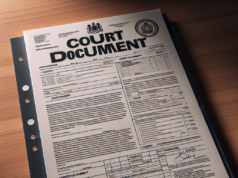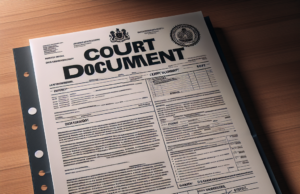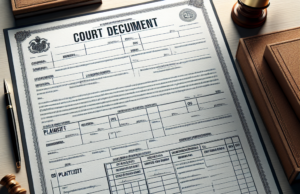
NORTH DAKOTA DIVORCE LAWS & REGULATIONS UPDATE 2023
A DECADE OF CHANGE: AN OVERVIEW OF NORTH DAKOTA’S DIVORCE LAWS AND REGULATIONS TIMELINE (2013-2023)
In the last decade, North Dakota’s divorce laws and regulations have witnessed substantial changes, demonstrating the state’s dedication to modernizing its legal framework while ensuring equity, transparency, and the welfare of families involved in divorce proceedings. This article provides a concise overview of key developments in North Dakota’s divorce laws and regulations from 2013 to 2023.
2013: No-Fault Divorce Enhancement
– Enhancement of the no-fault divorce process, allowing couples to seek divorce without assigning blame.
2014: Child Custody Best Interests Focus
– Focus on child custody arrangements based on the best interests of the child.
2015: Marital Property Division Clarity
– Clarity in guidelines for the division of marital property during divorce.
2016: Alimony Consideration Factors
– Establishment of factors for considering alimony awards.
2017: Child Support Calculation Updates
– Updates to child support calculations to adapt to changing financial circumstances.
2018: Mediation Promotion
– Promotion of mediation as an alternative dispute resolution method.
2019: Parenting Plans Enhancement
– Introduction of enhanced parenting plans outlining custody, visitation, and support arrangements.
2020: Digital Divorce Filing Options
– Introduction of digital options for filing divorce petitions, enhancing accessibility.
2021: Collaborative Divorce Emphasis
– Emphasis on collaborative divorce methods to minimize adversarial litigation.
2022: Online Divorce Resources
– Provision of online resources to guide individuals through the divorce process.
2023: Spousal Support Adjustments
– Consideration of adjustments to spousal support guidelines.
North Dakota’s commitment to adapting its divorce laws demonstrates the state’s dedication to supporting families through the challenges of divorce while upholding principles of fairness and justice. As the legal landscape continues to evolve, it remains essential for stakeholders and the public to engage in discussions that prioritize the well-being of families navigating divorce.
A Brief Guide to Divorce in North Dakota
Couples whose marriages are undergoing difficulty should consider the following things if they are considering separating in North Dakota:
North Dakota State Divorce Laws
To file for divorce in North Dakota, one or both parties must have been state residents for at least six months. A petition for divorce is generally filed in the county where the plaintiff lives.
Grounds for Divorce
Except in the case of no-fault divorce, there are six valid reasons to file for an at-fault divorce in North Dakota:
• Adultery
• Extreme physical or emotional cruelty
• Intentional neglect of a spouse
• Being convicted of a felony
• Drug or alcohol abuse
• Being abandoned by a spouse for any amount of time
Legal Separation
Parties who are experiencing marital difficulties may not want to wish to divorce in North Dakota because of religious reasons or due to uncertainty as to whether to permanently separate. The court can be petitioned for a legal separation establishing binding guidelines for child support, division property and other potential areas of dispute in much the same manner as applying for divorce.
Types of Divorce
Couples who can amicably agree upon the terms of their divorce may submit a joint petition requesting a divorce in North Dakota. If one party does not wish to divorce or disagrees upon the terms of separation, the case will be heard as a contested divorce in the North Dakota court system.
No Fault Divorce
Couples may apply for no fault divorce in North Dakota on the grounds of irreconcilable differences that make continuing the marriage hopeless. No wrongdoing must be proven for this kind of divorce to be approved.
Steps in the Divorce Process
Except in the cases of couples who are filing a joint petition and agree on all the terms of their divorce in North Dakota, when a plaintiff files a petition for divorce their spouse must be served with a formal notice of the proceedings. This can be done by either the plaintiff or a sheriff. The defendant will have 20 days to respond and contest the divorce if they wish to do so. If both parties cannot come to an agreement during the pretrial process, a judge will hear both parties’ case in court and issue a decision as to division of property, child custody and other issues of dispute.
Spousal support
Temporary or permanent alimony may be awarded by the court if both parties are unable to come to an agreement. These judgments may be altered by the court at any time.
Child Support
Parents who are unable to agree on the terms of child support will submit to the judgment of the court. Factors taken into consideration include both parties’ net income. If one or both parents requests a review, one can be conducted every three years.
Fathers’ and Mothers’ Rights
Gender is not permitted to be used as a consideration in awarding custody of a child. Both parents’ fiscal and emotional fitness to take care of a child, allegations of domestic abuse and other factors will be taken into account.



























